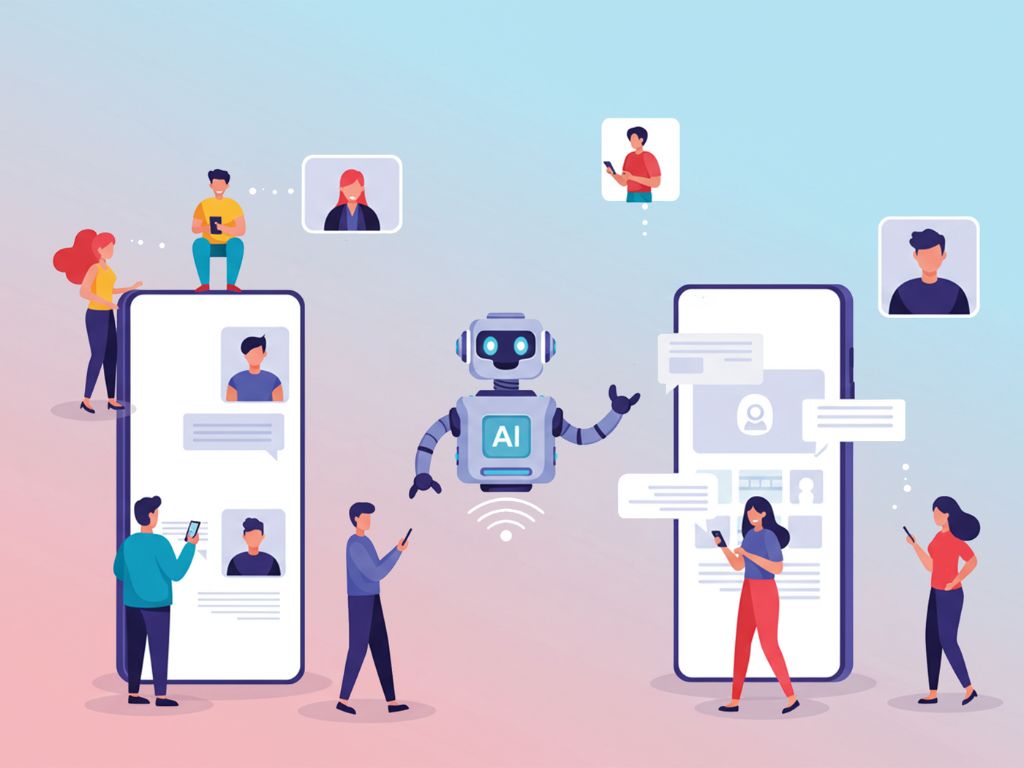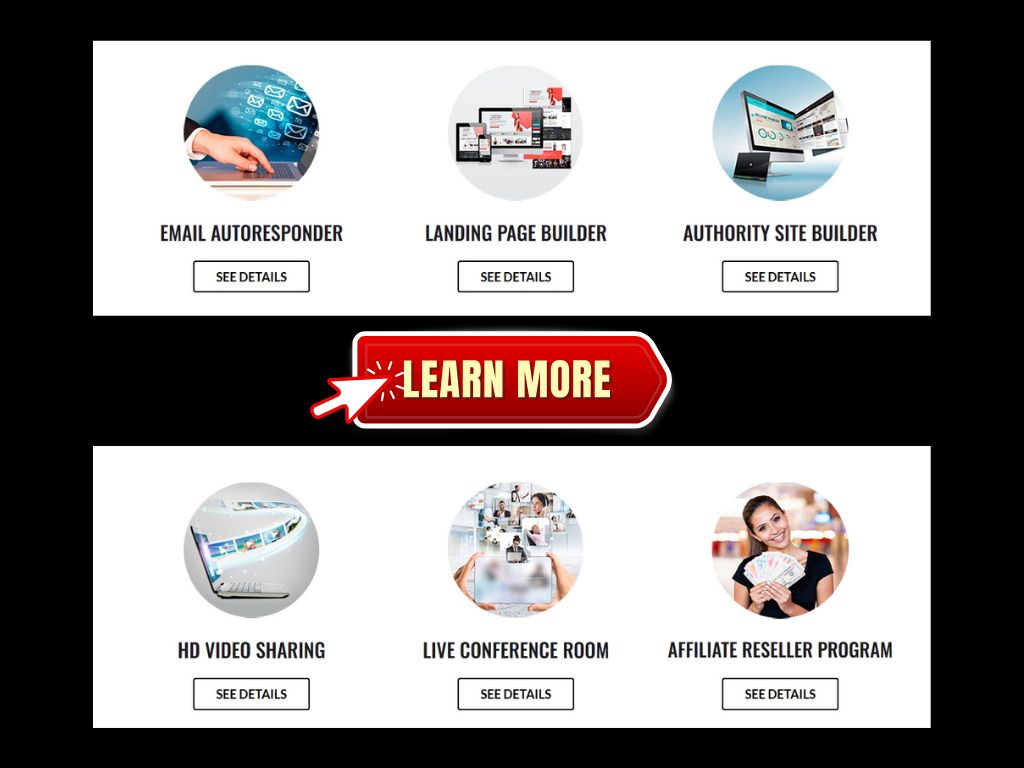Ai Side Hustles: 7 Practical Ways to Earn with Artificial Intelligence
AI is more than futuristic tech, it’s already woven into how people create, communicate, and work. And while the internet is flooded with “easy AI money” claims, most of them are shortcuts to disappointment.
The real opportunity? Using AI to boost your skills, save time, and create something worth paying for.
In this guide, you’ll find seven AI side hustles you can start without unrealistic promises, just clear explanations of how they work, where AI fits in, and the steps to get going.
7 AI Side Hustles to Boost Your Income
- Unlock lucrative income streams using AI.
- Learn practical steps to earn ethically with AI.
- Discover 7 AI side hustles you can start today.
- Gain access to valuable tools and tips for AI-based income generation.
- Master practical skills to boost your earning potential.
Freelance Writing with AI Support
Freelance writing is one of the most accessible AI side hustles because the demand for quality content is everywhere. Businesses, blogs, and brands need fresh articles, newsletters, sales copy, and social media posts daily. If you can produce high-quality writing faster than your competitors, you can win more clients and charge more for your work.
Why this appeals to searchers: If you’re a tech-savvy professional looking to diversify income, a student wanting portfolio pieces, or someone with a knack for words but limited time, this side hustle ticks multiple boxes. It’s flexible, scalable, and can be started with minimal upfront cost.
Where AI fits in:
- Research & Fact-Checking: AI can scan multiple sources and summarize key points in seconds.
- Outlining: Turn a vague topic into a clear, logical structure ready for writing.
- Drafting: Use AI to produce a first draft, saving you hours.
- Editing & Variations: Generate alternative headlines, tighten sentences, or adjust tone for different audiences.
Example: Imagine a small wellness brand needing a 1,200-word blog post on “The Science Behind Mindful Eating.” Without AI, you might spend two hours researching and two hours writing. With AI, research takes 15 minutes, the first draft is ready in another 15, and you spend the rest of your time refining and adding your unique insights. That’s four hours of work reduced to two doubling your potential client load without sacrificing quality.
Steps to start:
- Pick a niche you know well or want to specialize in (health, tech, finance, travel, etc.).
- Create a small portfolio 3–5 pieces showcasing your skill and style. These can be self-published on Medium or LinkedIn.
- Set your rates and offer AI-assisted efficiency as a selling point, clients love faster turnaround without a quality drop.
- Find your first clients via freelance marketplaces, networking, or pitching directly to businesses.
Mistakes to avoid:
- Delivering raw AI output, it lacks the nuance and originality clients expect.
- Being a “generalist for hire” without a focus niche writers get higher rates and more repeat work.
- Skipping fact-checking AI can make mistakes, and credibility is everything in writing.
Why it works long-term: Freelance writing with AI support is future-proof because you’re not selling AI’s output, you’re selling your ability to use AI as a tool to produce better results faster. As demand for content grows, your combination of human judgment and AI efficiency becomes even more valuable.

Blogging with AI Research
Blogging isn’t dead, it’s evolving. The difference between blogs that quietly fade away and blogs that become income-generating machines often comes down to strategy, consistency, and the ability to deliver exactly what your audience is searching for.
Why this appeals to searchers: Blogging is attractive to people looking for a flexible, low-barrier entry into online income. For tech-savvy professionals, it’s a way to build authority and attract consulting work.
For stay-at-home parents, it’s a business they can run on their schedule. For students or career changers, it’s a way to showcase expertise and build a portfolio. And unlike social media, you own your blog no algorithm changes can erase your audience overnight.
Where AI fits in:
- Topic Discovery: AI can scan forums, social platforms, and search trends to uncover content ideas people actively want.
- Keyword Research: Ask AI to generate keyword clusters based on a niche, then validate them with SEO tools.
- Content Outlines: Create detailed, SEO-friendly outlines in minutes, ensuring you never start from a blank page.
- Repurposing: Turn one blog post into Instagram captions, LinkedIn posts, or even a podcast script.
Example: Let’s say you run a blog about budget travel. Instead of spending hours manually researching “cheap travel tips for 2025,” you ask AI to:
- Find trending destinations under $1,000.
- Suggest blog titles like “7 Affordable Hidden Gems You Can Visit This Year.”
- Draft an outline with subheadings and bullet points. You then add your own travel stories, unique tips, and photos. The result is a post that’s both SEO-optimized and personal, ready to bring in readers (and potential affiliate income).
Steps to start:
- Choose a niche you’re passionate about and that has long-term potential (personal finance, health, education, travel, etc.).
- Set up your blog on WordPress, Squarespace, or another platform you own. Avoid free blogs if you plan to monetize.
- Plan your first 10 posts with AI’s help so you start with momentum.
- Write & publish consistently once or twice a week is plenty to start.
- Promote your posts on social media, forums, or through email to build an audience.
Mistakes to avoid:
- Relying on AI for the whole article Google favors original, human-driven content.
- Chasing every trending keyword instead of building topical authority in one area.
- Ignoring reader feedback comments and questions are gold for your next posts.
Why it works long-term: A well-run blog becomes an asset, it can generate ad revenue, affiliate income, and leads for years without constant reinvention. With AI helping you research, plan, and repurpose, you can spend more time on the creative touches that set your blog apart.

Affiliate Marketing with AI Optimization
Affiliate marketing is one of the most flexible ways to earn online, you recommend a product or service, and when someone buys through your special link, you earn a commission. There’s no need to create your own product, handle inventory, or manage customer service.
Why this appeals to searchers
This is attractive to people who want to:
- Start earning with low upfront costs
- Monetize an existing audience (like blog readers or social media followers)
- Create a flexible income source they can scale over time
- Focus on marketing and relationships rather than product development
But here’s the catch: affiliate marketing works long-term only when it’s built on trust. The internet is full of aggressive affiliate tactics that turn people off. Your goal is to become the person your audience can rely on for honest recommendations.
Where AI fits in:
- Product Research: Use AI to quickly summarize reviews, technical specs, and real-world pros/cons from multiple sources.
- Content Creation: AI can draft in-depth comparison articles, how-to guides, or buyer’s guides that save you hours of writing time.
- Ad Optimization: Generate multiple versions of ad headlines, descriptions, and CTAs for testing.
- Email Campaigns: AI can help write sequences that educate first and sell second.
Example: Let’s say you run a blog about home office setups. You join an affiliate program for ergonomic chairs. Instead of writing a generic product review, you:
- Use AI to gather data from verified buyers, expert reviews, and manufacturer details.
- Ask AI to create a comparison table between three models.
- Add your personal experience (photos, setup tips, pros/cons).
- Include your affiliate link alongside transparent disclaimers.
The result is a valuable guide that feels authentic and converts better than “Top 10” lists with no substance.
Steps to start:
- Pick a niche you either know well or are willing to learn deeply.
- Join reputable affiliate programs (Amazon Associates, ShareASale, Impact, or brand-specific programs).
- Plan content that solves problems e.g., “Best Budget Laptop for Students” instead of “Laptops for Sale.”
- Leverage AI for speed, but add your own experiences and photos to stand out.
- Promote your content via SEO, social media, or targeted ads.
Mistakes to avoid:
- Choosing products just for high commissions, they must be relevant and trustworthy.
- Overloading your content with affiliate links, it hurts trust and SEO.
- Skipping the disclosure be transparent about your affiliate relationship.
Why it works long-term: When done right, affiliate marketing becomes a semi-passive income stream. The content you create today can continue to bring in commissions months or even years later, especially if it’s kept up-to-date. AI helps you scale the process, but your human insight keeps it valuable.
Social Media Content Services
Businesses live and die by their online presence but keeping up with a consistent, engaging social media schedule is a full-time job. That’s where you come in. As a social media content service provider, you create and manage posts that attract attention, build brand loyalty, and drive sales.
Why this appeals to searchers:
This side hustle is ideal for:
- Freelancers who want recurring monthly clients
- Stay-at-home parents looking for flexible work hours
- Students or recent graduates wanting to build a portfolio in marketing
- Entrepreneurs seeking a scalable service that can grow into an agency
It’s attractive because it’s flexible, creative, and often offers predictable, recurring income clients usually pay on a monthly retainer.
Where AI fits in:
- Content Brainstorming: Ask AI for a month’s worth of post ideas tailored to a brand’s audience.
- Caption Writing: Generate multiple caption options with varied tones (fun, professional, inspiring).
- Visual Creation: Tools like Canva’s Magic Studio, Midjourney, or DALL·E can create unique, brand-aligned graphics.
- Scheduling & Repurposing: AI can help rewrite posts for different platforms to maximize reach without repeating yourself.
Example:
A local café hires you to manage their Instagram and Facebook pages. You:
- Use AI to generate a 30-day content calendar, mixing product shots, behind-the-scenes posts, and seasonal promotions.
- Create captions in the café’s friendly, neighborhood tone.
- Use Canva’s AI tools to design eye-catching visuals from customer photos.
- Schedule posts so the café owner never has to think about social media again.
You spend about 4–6 hours a month managing the account and receive a steady monthly fee.
Steps to start:
- Choose a platform focus (Instagram, TikTok, LinkedIn, etc.) become an expert there first.
- Build 2–3 sample content packages for a pretend client to show your skills.
- Offer your services to small businesses, start with local ones where you can easily get photos and insights.
- Create simple packages (e.g., 8 posts/month, 15 posts/month) with clear pricing.
- Use AI to stay ahead, update your clients with content plans and new ideas each month.
Mistakes to avoid:
- Posting without a strategy pretty pictures alone don’t convert.
- Over-automating AI is great for ideas and drafts, but final approval should keep the human voice intact.
- Ignoring analytics if you don’t measure performance, you can’t prove your value to clients.
Why it works long-term: Social media is an ongoing need unlike one-off projects, businesses require consistent posting every month. By using AI to handle brainstorming, drafting, and formatting, you can manage multiple clients without working around the clock. Over time, you can grow from one or two local clients to a roster of high-paying contracts or even a small agency.

Email Newsletter Creation
Email remains one of the most profitable marketing channels outperforming social media in engagement and ROI. Unlike a social feed where algorithms decide who sees your posts, email lets you speak directly to your audience. Businesses know this, yet many struggle to send regular, compelling newsletters. That’s your opportunity.
Why this appeals to searchers:
Email newsletter creation is attractive to:
- Freelancers who want ongoing, retainer-based work
- Stay-at-home parents looking for flexible, at-home income
- Small business owners wanting to use AI to improve customer retention
- Students seeking portfolio work in marketing and copywriting
The beauty is that email is evergreen once you create a sequence or template, it can be reused, updated, and repurposed for years.
Where AI fits in:
- Subject Lines: Generate multiple options and test them for open rate performance.
- Content Drafting: AI can write first drafts for newsletters, freeing you to refine and personalize.
- Segmentation: AI tools can analyze customer behavior and suggest personalized messaging for different audience segments.
- Follow-Up Sequences: Quickly create automated series like welcome emails or post-purchase thank-yous.
Example:
A boutique clothing store wants to boost customer engagement. You:
- Use AI to plan a monthly content calendar for their newsletters mixing style tips, behind-the-scenes photos, and exclusive offers.
- Draft each email with AI, then add brand voice and seasonal details.
- Segment the list so men and women receive different recommendations.
- Automate the sending process so the store owner doesn’t have to touch it.
With 2–3 hours of work per month, you deliver consistent, high-quality emails that drive both sales and customer loyalty.
Steps to start:
- Learn email basics, understand open rates, click-through rates, and compliance laws like GDPR and CAN-SPAM.
- Pick a platform (ConvertKit, MailerLite, or Mailchimp are beginner-friendly).
- Create sample emails for a fictional client to showcase your skill.
- Offer a simple package e.g., 4 newsletters/month or a 5-email welcome series.
- Use AI to streamline, but always keep the final voice human and authentic.
Mistakes to avoid:
- Writing emails that are all sales and no value people will unsubscribe.
- Ignoring personalization, generic emails feel spammy and get ignored.
- Forgetting to measure results showing improvements in open rates and clicks justifies your fee.
Why it works long-term: Email marketing is a recurring need for businesses, which means steady, predictable income for you. As you learn to blend AI efficiency with your creativity, you can manage more clients or offer higher-value packages without burning out.

Creating Digital Products with AI Help
Digital products like ebooks, templates, online courses, or printable planners are a way to create something once and sell it repeatedly with little extra work. There’s no inventory, no shipping, and no storage costs. Once made, they can be sold 24/7 to a global audience.
Why this appeals to searchers:
- Tech-savvy professionals can turn their expertise into packaged knowledge.
- Stay-at-home parents appreciate the flexibility of creating and selling at their own pace.
- Students can build a portfolio of products to showcase skills.
- Entrepreneurs can create add-on products for their existing audience.
This model satisfies the need for autonomy, achievement, and scalable income but it requires effort upfront. AI can dramatically shorten the creation process without sacrificing quality.
Where AI fits in:
- Idea Generation: Use AI to brainstorm product ideas in your niche.
- Outlining: Quickly structure your ebook, workbook, or course content.
- Content Drafting: Get a solid first draft in minutes, then refine for accuracy and voice.
- Design Assistance: Tools like Canva (with AI features) or ChatGPT-powered prompts can create layouts, graphics, and cover designs.
- Marketing Materials: AI can write product descriptions, social media posts, and ad copy.
Example:
You decide to create a budgeting planner for freelancers. You:
- Ask AI to list common financial challenges freelancers face.
- Have AI outline sections for income tracking, expense logging, and tax prep checklists.
- Design the planner in Canva, using AI to suggest page layouts.
- Write a compelling Etsy product description with AI’s help, then edit to match your tone.
Within a week, you have a polished product ready for sale and it can continue to earn for you long after the work is done.
Steps to start:
- Choose your format ebooks, printables, spreadsheets, audio files, or video courses.
- Research demand, look at marketplaces like Etsy, Gumroad, or Udemy for inspiration.
- Outline your product using AI to structure your ideas quickly.
- Create and refine AI drafts, you edit and personalize.
- Publish & promote start with one marketplace, then expand.
Mistakes to avoid:
- Making products too generic, your product should solve a specific problem.
- Skipping quality control AI-generated content must be reviewed for errors.
- Ignoring marketing, digital products don’t sell themselves.
Why it works long-term: Digital products can be a true passive or semi-passive income stream if paired with good marketing. AI makes it easier to produce them faster, but your unique ideas and quality control make them sellable. Once your first product is live, you can use the same workflow to create more, building a catalog that earns from multiple sources.

Smarter Paid Ads
Paid advertising on platforms like Google Ads, Facebook, Instagram, TikTok, or LinkedIn can be one of the fastest ways to get traffic, leads, and sales. But without a smart strategy, it’s also one of the fastest ways to lose money. That’s where AI comes in: it can reduce guesswork, improve targeting, and help you get more results for every dollar you spend.
Why this appeals to searchers:
- Freelancers can offer ad management as a high-value service.
- Small business owners can use it to grow faster without hiring a full marketing team.
- Students and career changers can build a portfolio with measurable results.
- Tech-savvy side hustlers can scale online stores, affiliate offers, or courses.
For many, paid ads feel risky but AI makes it possible to test small, track data closely, and improve performance over time, turning a “gamble” into a calculated investment.
Where AI fits in:
- Audience Targeting: AI tools can analyze customer data and recommend high-converting segments.
- Ad Copywriting: Instantly generate multiple headline and description variations to test.
- Creative Optimization: Tools like Canva’s Magic Studio or AI video editors can create ad visuals tailored to each platform.
- Performance Analysis: AI can process campaign data to highlight what’s working and what to cut.
Example: You’re running ads for a local yoga studio’s “First Month for $20” promo. Instead of guessing:
- You use AI to create 5 headline variations, 3 image concepts, and 2 different calls-to-action.
- You test them in small batches with a $5/day budget per variation.
- AI analyzes results, showing one headline-image combo gets 3x more clicks.
- You pause all underperformers and shift the budget to the winner maximizing ROI without overspending.
Steps to start:
- Pick one platform (Google Ads or Meta Ads Manager are great starting points).
- Learn the basics of campaign setup, bidding, and ad compliance.
- Use AI to brainstorm creatives and write compelling ad copy quickly.
- Test small, start with $5–$10/day until you find a winning formula.
- Track results and let AI help you refine the best performers.
Mistakes to avoid:
- Jumping in with a large budget before testing.
- Running too many ad variations at once, you won’t gather clear data.
- Ignoring landing pages, great ads can’t fix a bad website or offer.
Why it works long-term: Paid ads, when managed well, can scale almost any online side hustle. AI gives you the tools to test faster, target smarter, and avoid common pitfalls making ads a more reliable growth tool instead of a costly experiment.
Final Thoughts On Ai Side Hustles
AI won’t build your side hustle for you but it can help you:
- Save time on repetitive tasks
- Improve the quality of your output
- Take on more clients or projects without burning out
The most successful AI side hustlers combine human creativity + AI efficiency. Choose one path, learn it well, and keep building from there.

Ai Side Hustles: Frequently Asked Questions
Q: What are the easiest AI side hustles to start with no prior experience?
A: Creating AI art for print-on-demand products or offering basic AI-powered content summaries are often good starting points. They require minimal technical skills and focus on creative application of AI tools.
Q: How much money can I realistically make with an AI side hustle?
A: Earnings vary greatly depending on the side hustle, your dedication, and marketing efforts. Some individuals earn a few hundred dollars a month, while others scale their AI side hustles into full-time incomes. Focus on providing value and building a client base.
Q: What are the legal and ethical considerations I should be aware of when using AI for side hustles?
A: Be mindful of copyright issues when using AI to generate content. Always disclose that AI was used in your work. Also, prioritize data privacy and security when handling client information with AI tools.
Q: What if the AI gives incorrect information when I’m using it for tasks?
A: You must always verify any output generated by AI. It’s crucial to fact-check and correct any inaccuracies before using the information in your work or sharing it with clients. Always remember that AI is a tool, and you are responsible for the final results.
One Response to Ai Side Hustles: 7 Practical Ways to Earn with Artificial Intelligence